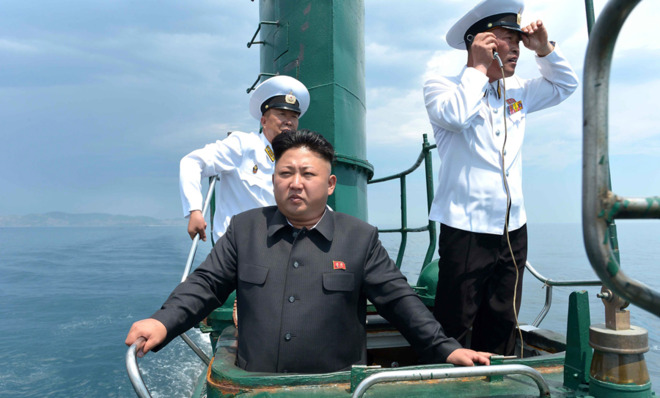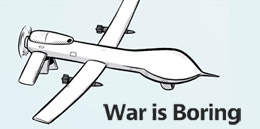The North Korean Army is rusting away. So it's getting creative.
Made to do without traditional weaponry, Pyongyang expands its "asymmetric" forces


The Pentagon released in March its annual North Korean report, a 22-page assessment of the hermit regime's military strategy. The report makes it clear that Pyongyang's ships, planes, and armored vehicles are old and obsolete — and despite North Korea's "military-first" economic strategy, there's no money for upgrades.
Forced to make do without traditional weaponry, North Korea is expanding its "asymmetric" forces, including nuclear weapons, commandos, and hackers, the report concludes.
The Pentagon is remarkably downbeat on the state of North Korean conventional forces — to the point of being dismissive and repeatedly referring to the North Korea People's Army as "antiquated" and "outdated."
The Week
Escape your echo chamber. Get the facts behind the news, plus analysis from multiple perspectives.

Sign up for The Week's Free Newsletters
From our morning news briefing to a weekly Good News Newsletter, get the best of The Week delivered directly to your inbox.
From our morning news briefing to a weekly Good News Newsletter, get the best of The Week delivered directly to your inbox.
While the report notes newly identified NKPA tanks, artillery, and other armored vehicles, it doesn't even bother going into detail. This suggests the Pentagon doesn't think much of the new vehicles' potential to shift the balance of power on the ground.
The North Korean air force gets slightly more attention. The report notes that the air arm hasn't received any new fighter planes in 15 years, when it purchased decades-old used MiG-21s from Kazakhstan.
The Pentagon is equally unimpressed with Pyongyang's apparent new surface-to-air missiles, which are outwardly similar to Russian S-300s and Chinese HQ-9s.
Atomic insurance policy
A free daily email with the biggest news stories of the day – and the best features from TheWeek.com
President Kim Jong-un's top priority is his own survival. His regime threatens violence in order to extort concessions from the rest of the world, meanwhile relying on its atomic weapons to deter foreign military intervention.
North Korea conducted its third nuke test in February 2013.
Pyongyang has also invested a lot of time and money in developing ballistic missiles — and for good reason. The new Hwasong-13 intercontinental ballistic missiles, derived from primitive Scud rockets, might in theory be able to reach the United States.
The missiles deliver the nukes that help keep the regime alive "absent normalized relations with the international community," according to the report.
Its arsenal rusting, its economy in shambles, and newly armed with atomic weapons, North Korea is developing a new kind of asymmetric army that doesn't need to win a conventional conflict.
Instead, Pyongyang is cultivating commando and cyber forces for isolated, coercive attacks meant to forcefully shape North Korea's external relations without resorting to full-blown war.
For example, a pocket submarine like the one that sank the South Korean corvette Cheonan in 2010, enraging South Korea and underscoring the North's reputation for volatility, is more useful than a full-size conventional submarine that might survive a few hours during major combat.
The report notes North Korea's continuing development of small subs.
In a crisis, the NKPA's commandos could infiltrate South Korea and even Japan aboard mini-subs and aircraft and by foot over the Demilitarized Zone to carry out long-range reconnaissance, raids, sabotage, and attacks on the South's politicians.
The Pentagon claims that North Korea is building up expertise in "offensive cyber operations," which the report describes as the most "cost-effective way to develop asymmetric, deniable military operations." The report blames these hackers for denial-of-service attacks against South Korea from 2009 to 2011 and again in 2013.
Pesky internet raids aside, how good North Korea's asymmetric forces are remains an open question.
The North reportedly has no fewer than 200,000 commandos. They are, the report notes, among the "most highly-trained, well-equipped, best-fed, and highly motivated forces in the KPA."
It's not often that the Pentagon praises a rival's soldiers as "best-fed."
Moreover, U.S. Special Operations Command has 63,000 hand-picked troops drawn from a total military of 1.3 million. North Korea has 200,000 Special Operations Forces in an army of one million. Unless North Koreans are somehow unusually well-suited to the commando life, it's likely the "special" moniker doesn't actually mean very much.
Nightmare scenario
What worries the Pentagon is the prospect of a disruptive attack by Pyongyang that accidentally escalates into all-out war. Former U.S. Secretary of Defense Robert Gates wrote in his memoir that the South Korean government had to be restrainedfrom launching counter-attacks against North Korea after the NKPA shelled Yeongpyeong Island, killing four South Koreans.
All of this is not to say that North Korea has changed in any meaningful way. If Pyongyang got its hands on a trillion dollars, it would probably spend every penny on tanks, planes, and artillery and invade the South the next day.
No, the North's new asymmetric military posture reflects economic realities. Impoverished Pyongyang has no choice but to get creative.
From drones to AKs, high technology to low politics, War is Boring explores how and why we fight above, on, and below an angry world. Sign up for its daily email update here or to its RSS feed here.
More from War is Boring...
Kyle Mizokami is a freelance writer whose work has appeared in The Daily Beast, TheAtlantic.com, The Diplomat, and The National Interest. He lives in San Francisco.

